These Epiphora moths from Africa are among the most beautiful in the world; with dark wings and yellow crescents they have such a celestial appearance!

In Africa, there are numerous species of Epiphora moths; large and conspicuous species of silkmoths ! You’d be wrong to assume they are easy to identify however. In some instances there are many similar to nearly identical looking species, and identifying them can be a headache.
Today we are looking at what I presume to be Epiphora vacuna. Presume, because it is still quite difficult to tell apart from other species such as Epiphora ploetzi and Epiphora intermedia (are they seperate species or synonyms?).
I have consulted an expert about the matter and the response made things even more complicated: “All or most of the names from West Africa are likely just synonyms of vacuna (incl. ploetzi), and whether the Central African forms are really a (or several) different species remains to be conclusively demonstrated. If they are, the name congolana Bouvier is probably the one to use for these (with intermedia Rougeot – from Shaba – as a synonym). I have a few specimens from Uganda too and treat them as E. vacuna as I can see no persuasive differences from the West African specimens. Naumann (in Kühne’s Moths of Kakamega Forest) illustrated two very similar specimens from Kakamega as E. intermedia and E. congolana, but heaven knows how he got to those identifications. They look the same to me (the length of the white basal fw bar is variable in my Congo specimens from the same locality). I haven’t yet looked at the genitalia of this group, however, but don’t expect there to be differences that would support the plethora of “species” that have been proposed in this group.” – Rolf Oberprieler, 2017 (pers. comm.)
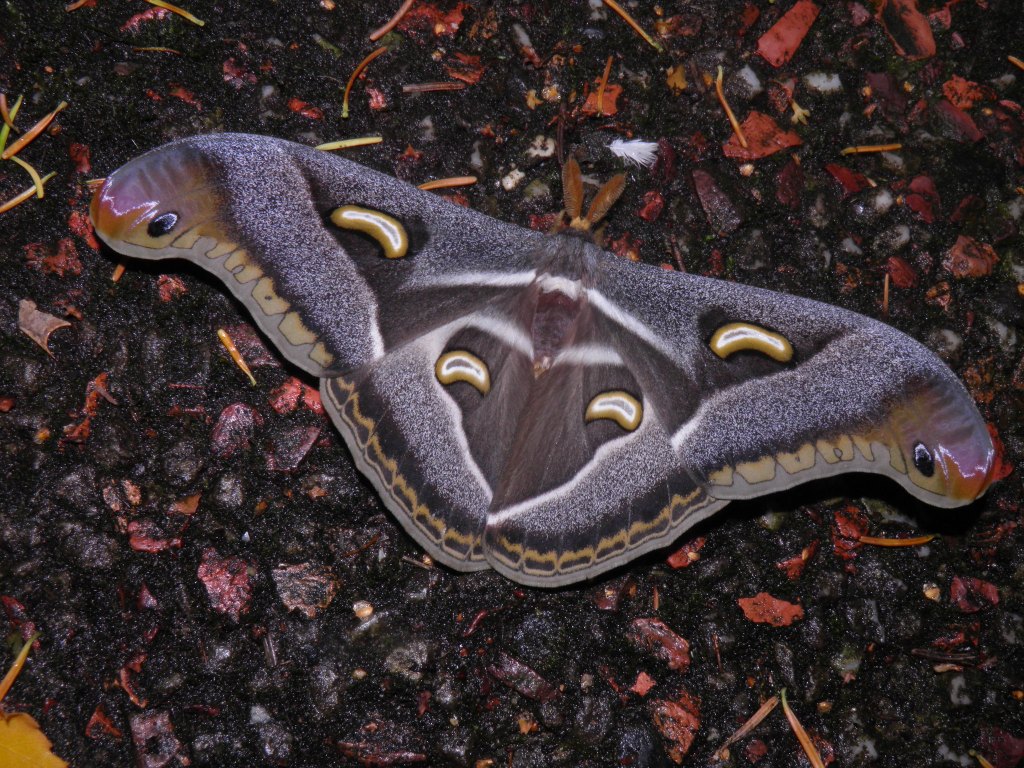
These captive animals were obtained from Kenya AND Cameroon – this mixed origin complicates things even further, because it’s possible that Kenya and Cameroon contain different species. If that’s true, it means the pictures on this page are not one, but potentially two(!) different species. That being said, larvae and imagoes looked the same and I am confident enough to file them under the same species page.
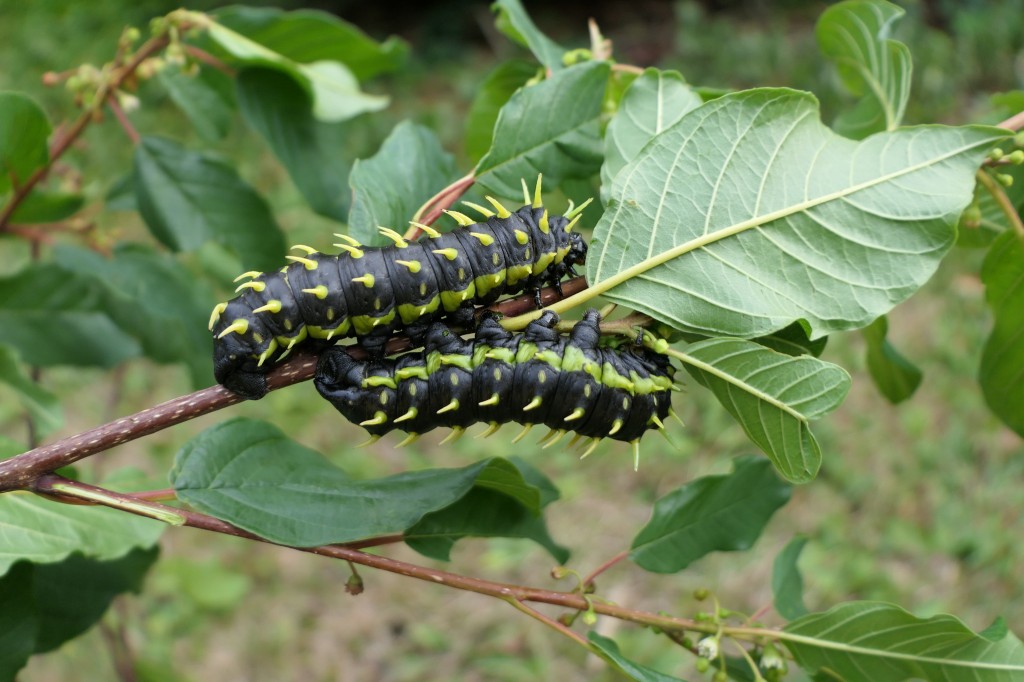
If we believe that Epiphora vacuna (Sierra Leone, Ivory Coast, Ghana, Liberia) is a synonym of Epiphora ploetzi (Cameroon, Gabon, Congo, Democratic Republic of the Congo, Kenya) and Epiphora intermedia (Angola, Cameroon, Central African Republic, Congo, DRCongo, Equatorial Guinea, Gabon, Guinea, Nigeria, Rwanda, Sudan) then it has a rather large distribution. But is it true? Honestly, I’m not sure if I have the answer. It’s a bit of a mess to me. More research is needed (please email me if you know more about these Epiphora!).
Let’s say that in the countries of Angola, Benin, Cameroon, Central African Republic, Congo, DRCongo, Gabon, Ghana, Guinea, Ivory Coast, Sierra Leone, Sudan, Uganda, Equiatorial Guinea, Nigeria, Rwanda, Sudan, and Liberia there exists a population- complex of black Epiphora moths with yellow crescents that may or may not be the same species. (vacuna, intermedia, ploetzi – and more?). DNA evidence alone will not be sufficient; morphology should also be included.
What we do know is that their larvae are either black, with green/yellow flourescent spines, and a yellow stripe on their flank. There is also a yellow/orange form with black spines. Larvae of Epiphora cf. vacuna seem to mainly feed on plants and shrubs from the Rhamnaceae (such as Maesopsis and Ziziphus), Rutaceae (such as Zanthoxylum, and Fagara) and Euphorbiaceae (such as Croton) plant families in the wild.
- Difficulty rating: Challenging – while the moths are very easy to pair, larvae often struggle to survive in captivity, due to suboptimal host plants and suboptimal rearing conditions in captivity.
- Rearing difficulty: 7.5/10
- Pairing difficulty: 3/10 (Archieving copulations)
- Host plants: Maesopsis eminii (Rhamnaceae), Ziziphus sp. (Rhamnaceae), Croton oligandrus (Euphorbiaceae), Neoboutonia melleri (Euphorbiaceae), Fagara macrophylla (Rutaceae), Zanthoxylum claa-herculis (Rutaceae), Zanthoxylum macrophyllum (Rutaceae) and more. In captivity, the larvae can develop themselves on non-native Rhamnaceae such as Rhamnus sp. (Rhamnaceae), Ceonothus sp (Rhamnaceae) and sometimes even on Salix (Salicaceae).
- Natural range: There seems to be a lot of ambiguity around the status of these species and their distributions. It was difficult to gather information. Let’s say that in the countries of Angola, Benin, Cameroon, Central African Republic, Congo, DRCongo, Gabon, Ghana, Guinea, Ivory Coast, Sierra Leone, Sudan, Uganda, Equiatorial Guinea, Nigeria, Rwanda, Sudan, and Liberia there exists a population- complex of black Epiphora moths with yellow crescents that may or may not be the same species (vacuna, intermedia, ploetzi – and more?). DNA evidence alone will not be sufficient; morphology should also be included.
- Polyphagous: yes
- Generations: Multivoltine (usually one but up to two generations a year)
- Family: Saturniidae (silkmoths)
- Pupation: Cocoon – silk encasing
- Prefered climate: Hot and very humid
- Special notes: Rearing is tricky, due to the fact larvae don’t always cope well with non native food plants. Maybe there are better host plant options in Europe/USA for captive rearing, but they haven’t been discovered.
- Estimated wingspan:
- Binomial name: Epiphora vacuna (Westwood, 1849) [syn. intermedia / ploetzi? who knows! not me for sure. ]
Breeding these species in captivity is certainly possible! The best results are obtained by rearing the larvae on Ceonothus or Rhamnus. Some people report mixed succes with Salix sp. and in one instance, Prunus persica(!).
The issue is that not all the caterpillars take non-native host plants very well. Obtaining a good survival ratio from egg to cocoon in captivity is tricky (but possible in some circumstances). Some breeders report a survival ratio of 10% to 40% on Ceonothus (not optimal, but it works).
For a really good result, I suspect one would have to grow their native host plants (Rearing with Maesopsis, Zanthoxylum or Ziziphus would probably have good results!) but these can be tricky to obtain and grow beyond their native range.
The eggs of Epiphora cf. vacuna can easily be incubated on room temperature (20-21C). The eggs will hatch in 2-3 weeks time. Babies can be raised in plastic boxes.

The eggs are oval, greyish to creamy white – and first instar larvae are plain black. They appear to be mostly solitary, although young larvae have the proclivity to feed closer to eachother while maintaining some personal space.
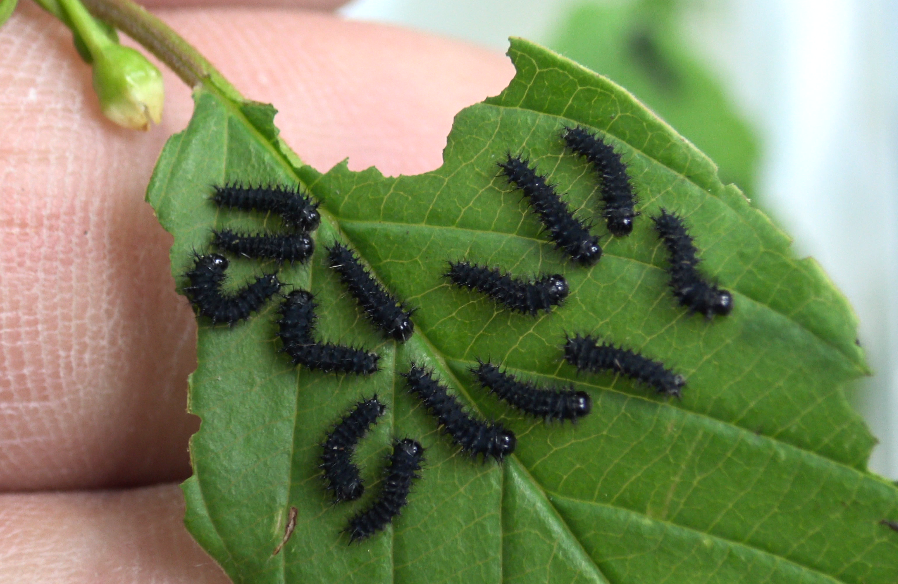

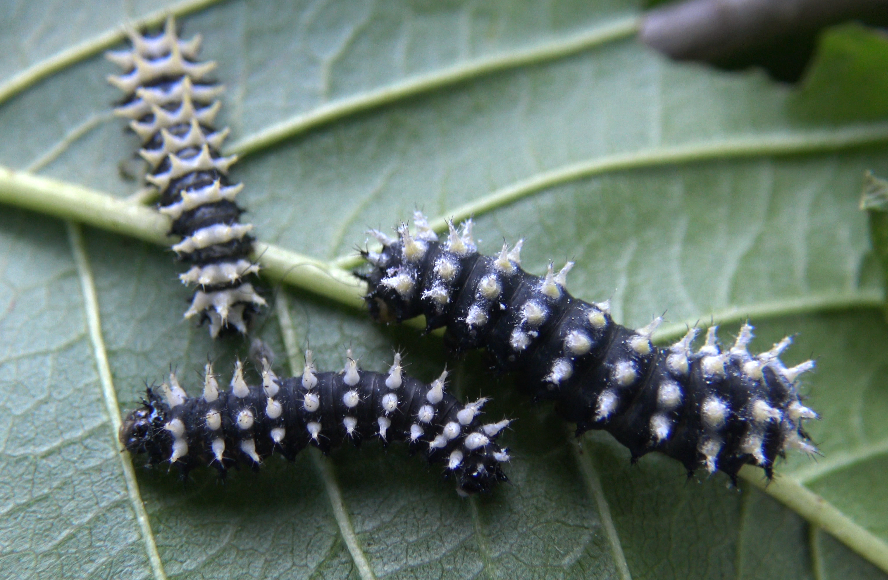
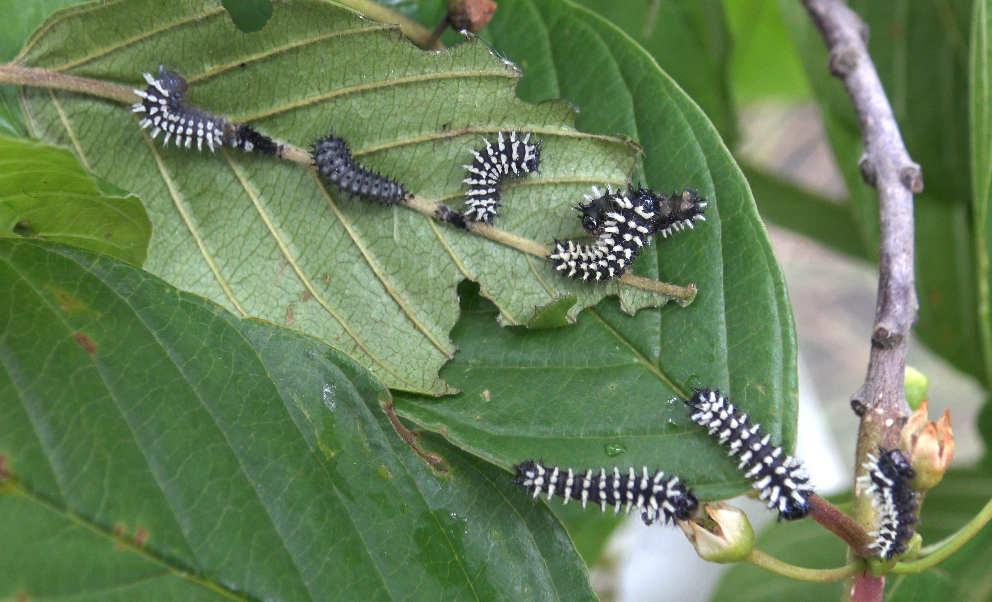

While I’m one of the few people who has actually managed to raise this species (not to brag, but very few people succeed in raising them!) – I can’t say it was a huge succes. At best, I can rear a handful of cocoons from 30-60 eggs. The mortality rate seems high (usually around 70%+) That means I too, have a lot to learn! And the result I obtained was far from perfect. If you have raised Epiphora cf. vacuna with better results than I had, then do leave a comment, or email me.
The first instars can be raised in simple plastic boxes. They prefer warm and humid conditions.
The first instars are black; the second instars are black but with white spines (that secrete a waxy substance over time).
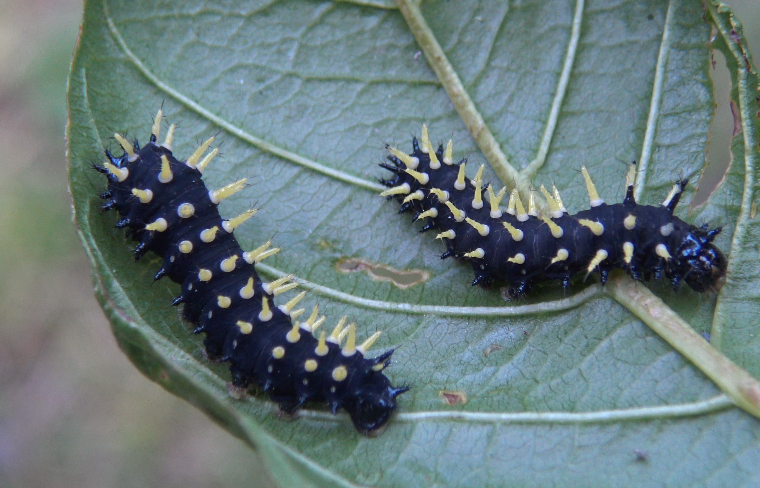
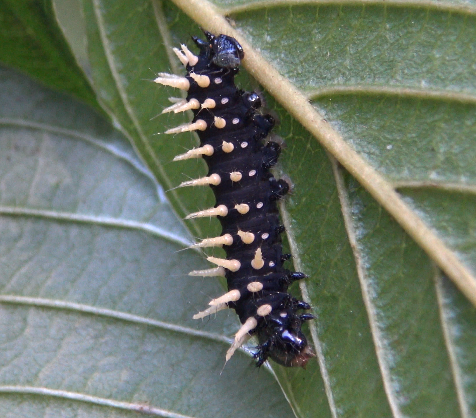
The third instar is black, with yellow spines. At this point, I usually move them to a larger enclosure; this can be a large plastic box with ventilation holes, or, a large pop up cage (make sure the room is humid if you use a pop-up cage!).
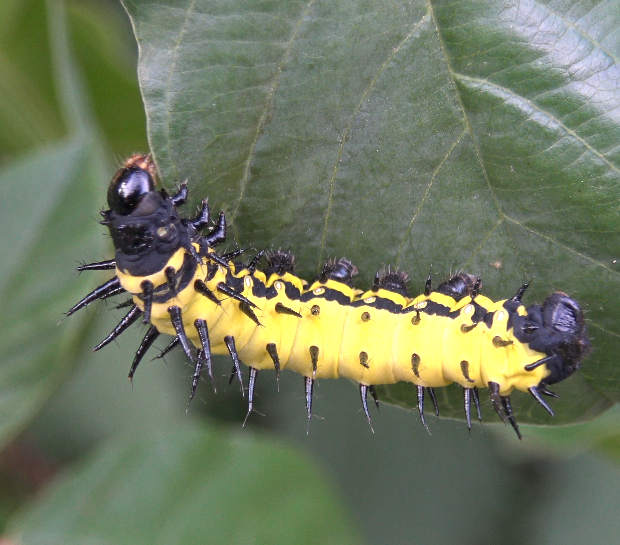

Interestingly, the fourth instar was bright yellow and black.
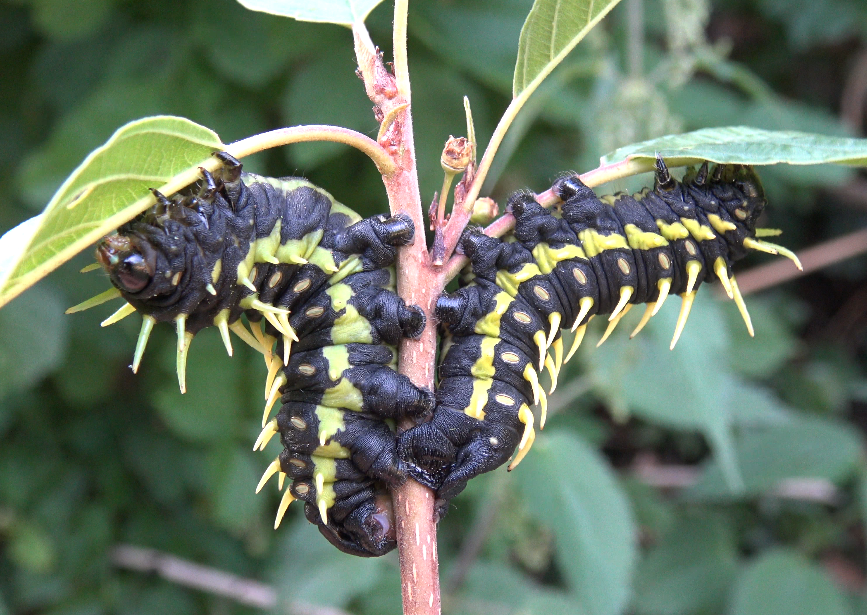

In the fifth instar the larvae became quite large and black with yellow/green spikes!






Thank you for reading! Please keep in mind that sadly; the scientific value of this article is reduced, because the livestock is of mixed origin (Kenya and Cameroon) – and it would have been wiser for me to keep them separate. That being said, I did not hybridize both bloodlines, they were just physically mixed (they are both reared from wild eggs!). However all the larvae and moths pictures in this article are either 100% Cameroonian and 100% Kenyan. This article is more confusing than other articles on my website, due to the ambiguous taxonomic status of Epiphora vacuna/epiphora/ploetzi, the fact it is visually difficult to distinguish between them.
That being said, the early life stages of these Epiphora moths are rarely documented or photographed – and that’s where the value of this article lies. Please do not hesitate to email me (bart.coppens@hotmail.com) if you have additional scientific information about these insects!
If this article was helpful or informative to you consider sponsoring us; or take a look at the many other articles on this website!
Thank you for reading my article. This is the end of this page. Below you will find some useful links to help you navigate my website better or help you find more information that you need about moths and butterflies.
Dear reader – thank you very much for visiting! Your readership is much appreciated. Are you perhaps…. (see below)
- Not done browsing yet? Then click here to return to the homepage (HOMEPAGE)
- Looking for a specific species? Then click here to see the full species list (FULL SPECIES LIST)
- Looking for general (breeding)guides and information? Then click here to see the general information (GENERAL INFORMATION)
- Interested in a certain family? Then click here to see all featured Lepidoptera families (FAMILIES)
Citations: Coppens, B. (2022); Written by Bart Coppens; based on a real life breeding experience [for citations in literature and publications]
Was this information helpful to you? Then please consider contributing here (more information) to keep this information free and support the future of this website. This website is completely free to use, and crowdfunded. Contributions can be made via paypal, patreon, and several other ways.
All the funds I raise online will be invested in the website; in the form of new caresheets, but also rewriting and updating the old caresheets (some are scheduled to be rewritten), my educational websites, Youtube, breeding projects, the study of moths andconservation programs.
Donate button (Liberapay; credit card and VISA accepted)
Donate button (PayPal)![]()
Become a member of my Patreon (Patreon)![]()
Find me on YouTube
Find me on Instagram![]()
Join the Discord server: Click here
Join the Whatsapp server: Click here
Facebook: Click here
